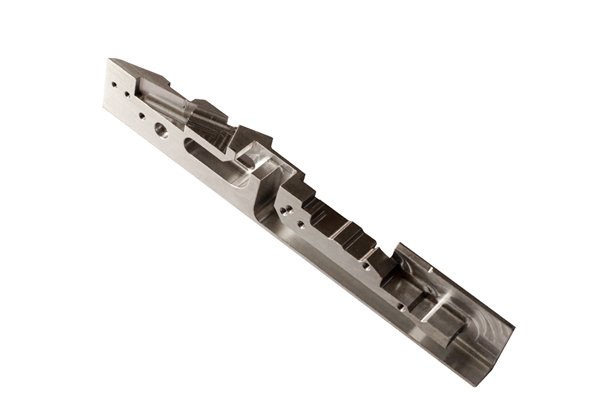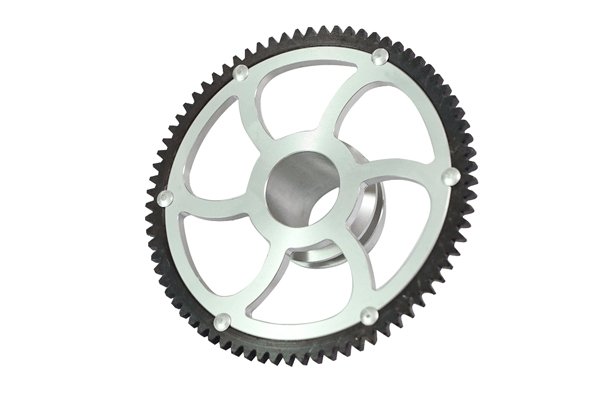In the world of manufacturing, reducing waste and optimizing efficiency is more crucial than ever. One of the most significant culprits of inefficiency in CNC (Computer Numerical Control) machining is the scrap rate. As a leading innovator in the field, YL Machining understands that minimizing scrap not only saves costs but enhances overall production quality and sustainability. This comprehensive article will delve into the multifaceted topic of scrap reduction, providing actionable insights, strategies, and methodologies that can drastically improve CNC machining operations.
What is Scrap?
In manufacturing, scrap refers to the portion of material that is discarded or waste due to defects, errors, or excessive trimming during the production process. This can come from various sources, including errors during material preparation, machining processes, or when parts fail inspection. Scrap represents a significant cost—the lost material, time, and resources directly affect a company’s bottom line.
Measuring Scrap Rates
The scrap rate is typically calculated by dividing the weight of scrap produced by the total production amount, expressed as a percentage:
[
text{Scrap Rate} = left( frac{text{Weight of Scrap}}{text{Total Production Weight}} right) times 100
]
For example, if 10 pounds of scrap are produced while manufacturing 90 pounds of usable parts, the scrap rate would be roughly 10%.
Understanding the root causes of scrap is vital for implementing effective strategies to reduce it. Some common causes include:
Material Selection Issues
Choosing the wrong material for a specific application can lead to difficulties in achieving the desired tolerances and performance, resulting in scrapped components. For example, a machinist may select a metal that is too hard for a given tool, leading to premature wear and breakage.
Tool Wear and Tooling Errors
Tools wear out over time, and their performance can degrade, leading to inaccuracies in machining. Furthermore, improper tool setup can create misalignments, resulting in incorrect cuts that can only be discarded.
Programming and Setup Errors

Programming errors or inefficiencies in CNC machinery can lead to incorrect tool paths, resulting in unnecessary scrap. Setup errors, including incorrect dimensions or not accounting for the tolerances, frequently increase scrap rates.
Human Factors
Human errors, such as negligence during the setup process or miscalculations, can lead to higher scrap rates. While automation can mitigate this issue to some extent, skilled operators are still vital for ensuring optimal performance.
Once the common causes of scrap are identified, implementing targeted strategies becomes essential. Here are key approaches to consider:
Improve Material Selection
Selecting the appropriate materials is the foundation of reducing scrap. Conduct thorough research and consider factors such as machinability, durability, and cost-effectiveness. Collaborate with materials scientists if necessary to ensure the best fit for your specific applications.
Implement Effective Tool Management
Maintain and monitor tools rigorously. Use advanced tool management systems that can track tool life and schedule replacements or sharpening. Regular inspections and tools’ preventive maintenance will ensure that cutting tools are always at their optimal performance, thereby reducing scrap.
Optimize CNC Program and Tool Path
Invest in robust CAM (Computer-Aided Manufacturing) software that allows for efficient tool path programming with reduced cycle time. By using simulation tools, an operator can visualize the whole process and identify potential issues before actual machining starts. This minimizes the risk of errors that lead to scrap.
Enhance Training and Skill Development
Continuous training for operators is essential. Investing in their skills enables them to operate CNC machines effectively and mitigate errors. Conduct regular workshops and training sessions to keep the team updated on best practices, new technologies, and methods to reduce scrap.
Utilize Quality Control Measures
Implementing stringent quality control measures can identify defects before they escalate into larger issues that result in scrap. Techniques such as in-process measurements, visual inspections, and statistical process control (SPC) can significantly reduce scrap rates.
Automation and Robotics
Automated CNC machines can minimize human error significantly. Collaborative robots (cobots) can handle repetitive tasks, enabling human workers to focus on more complex operations that require human intuition and skill.
Advanced CNC Software and Programming
Advanced software that incorporates artificial intelligence can learn from previous jobs and optimize machining parameters accordingly. This helps in ensuring precision in machining and reducing the potential for scrap.
Real-time Monitoring Systems
Implementing real-time monitoring systems allows manufacturers to gather data during production. Anomalies can be detected early, enabling quick interventions to avert further scrap production.
To quantify the progress in reducing scrap rates, KPI tracking is essential. Here are some KPIs to consider:
Case Study 1: Material Selection Improvement
At YL Machining, one of our clients faced a scrap rate of 15% due to improper material selection. Through collaboration with material engineers, we recommended a high-efficiency aluminum alloy, which resulted in reducing the scrap rate to 5% within three months.
Case Study 2: Enhanced Tool Management
Our second client relied on outdated tools, leading to frequent breakages. By implementing a robust tool management program, including regular maintenance schedules, they reported a 40% reduction in scrap due to tooling errors.
Case Study 3: Remote Monitoring and Real-time Adjustments
Implementing a remote monitoring system for CNC machines allowed operators to monitor cycle times and detect irregularities instantly. As a result, scrap rates were reduced by an impressive 20% within just six months!
Reducing scrap rates in CNC machining is not merely about saving money—it’s about sustainability, optimizing resources, and enhancing production quality. As companies like YL Machining adopt forward-thinking approaches and cutting-edge technologies, the manufacturing landscape is evolving. Emphasizing continuous improvement, investing in technology, and prioritizing training and development will equip businesses to navigate the complexities of modern machining with confidence.
With sustainability at the forefront of contemporary manufacturing, the future may bring even more innovative solutions for scrap reduction, including advancements in materials science, machine learning algorithms for optimization, and a greater emphasis on circular manufacturing practices. The path forward is bright, and every step towards reducing scrap is a step towards a more efficient and responsible industry.
—






